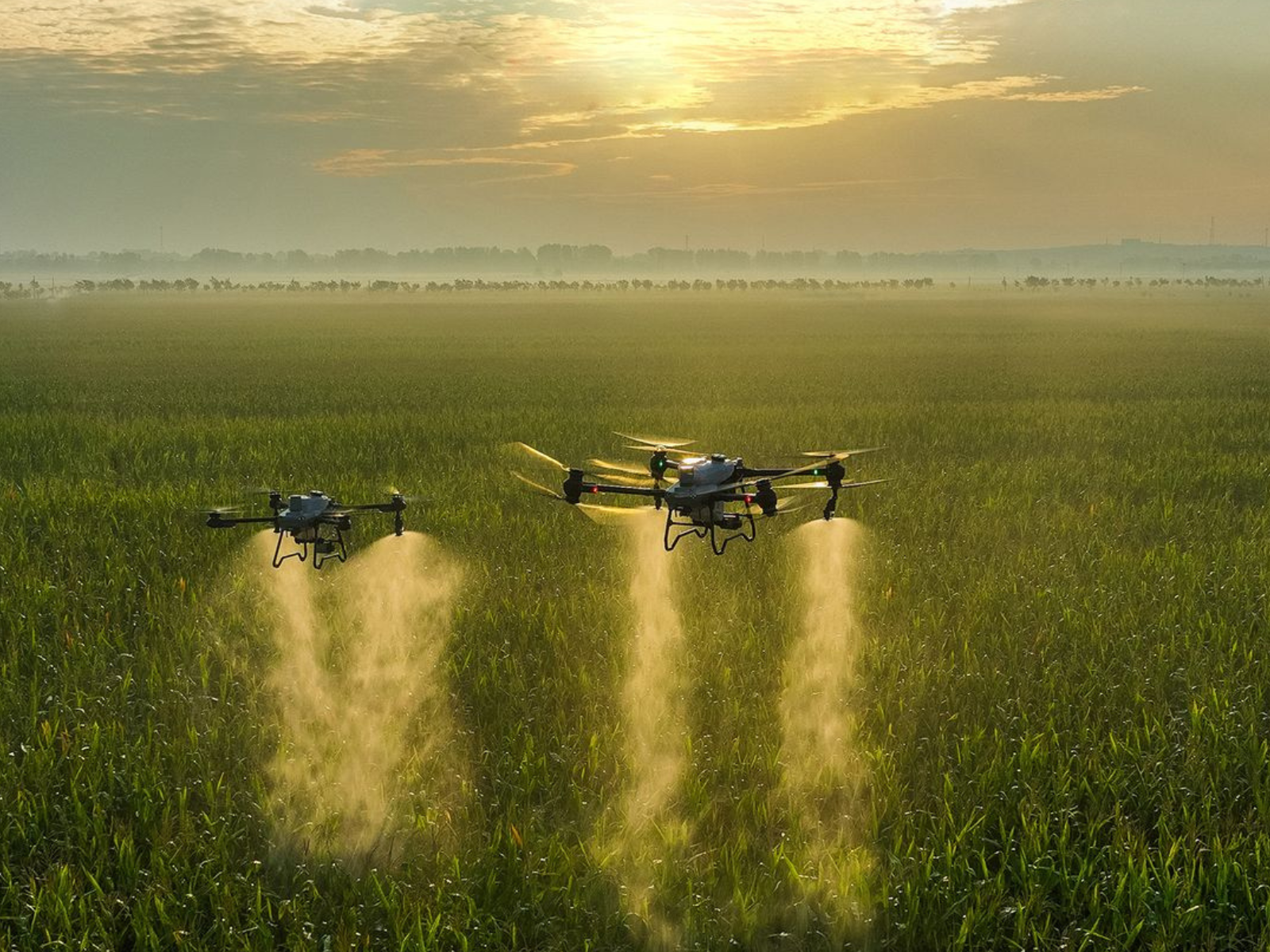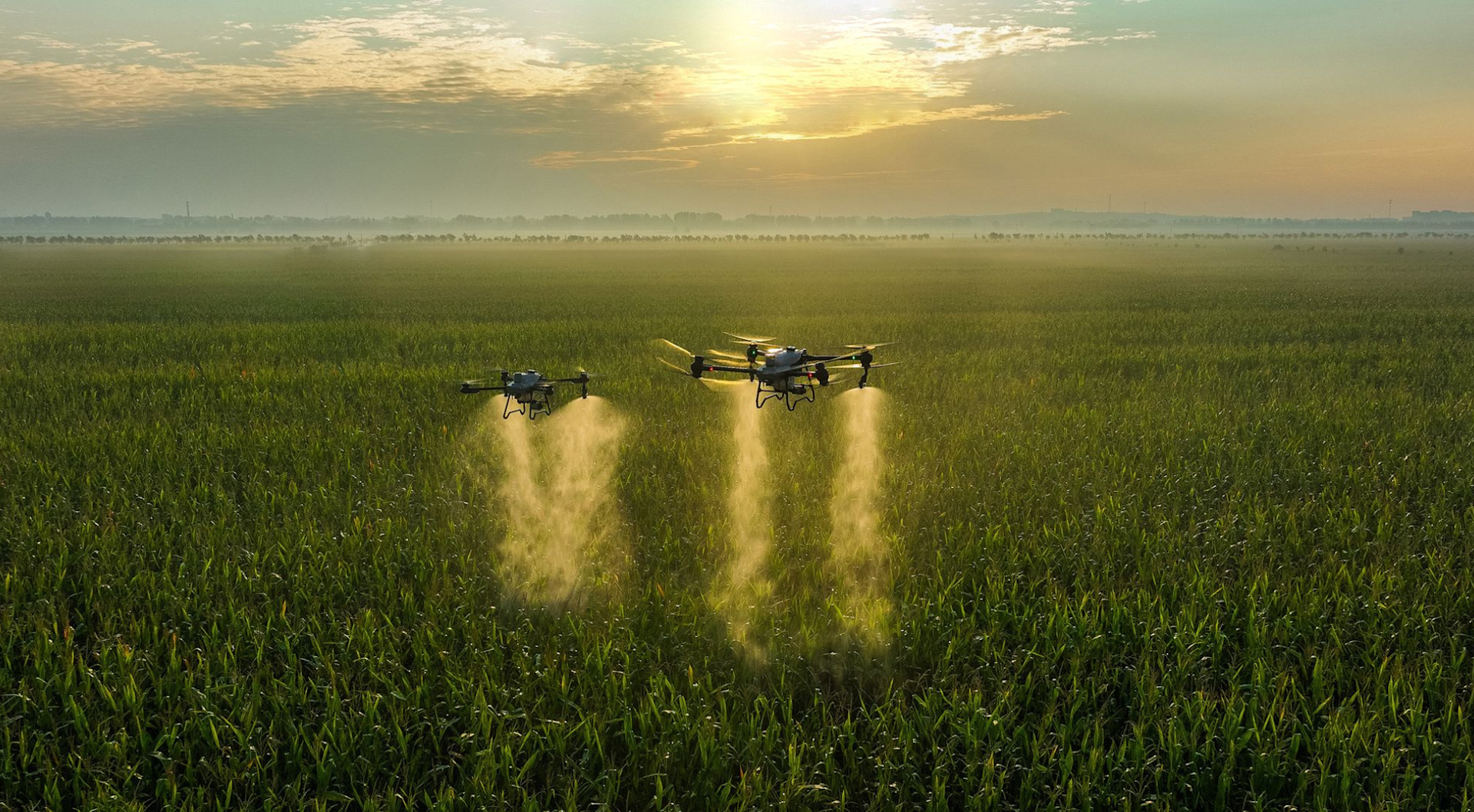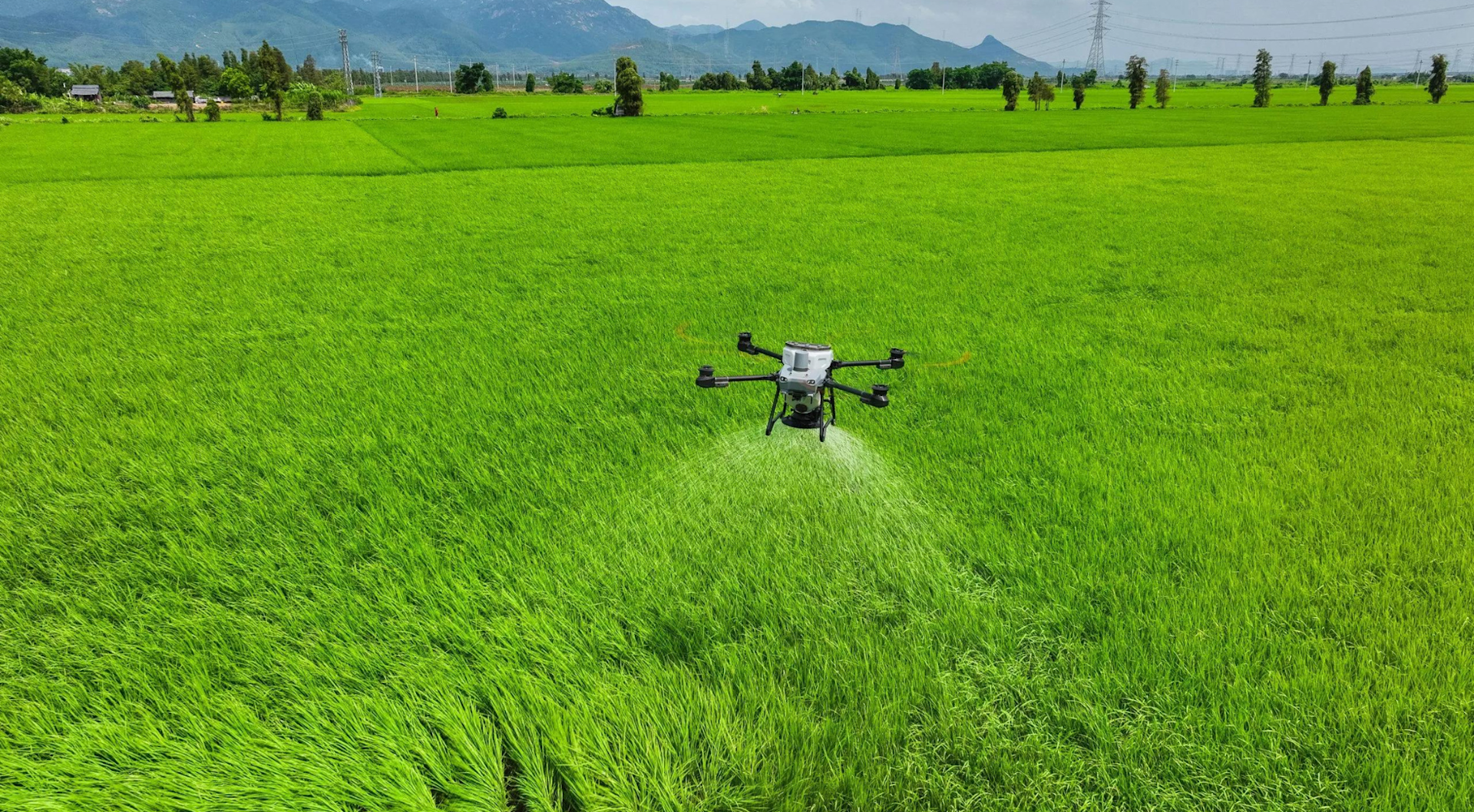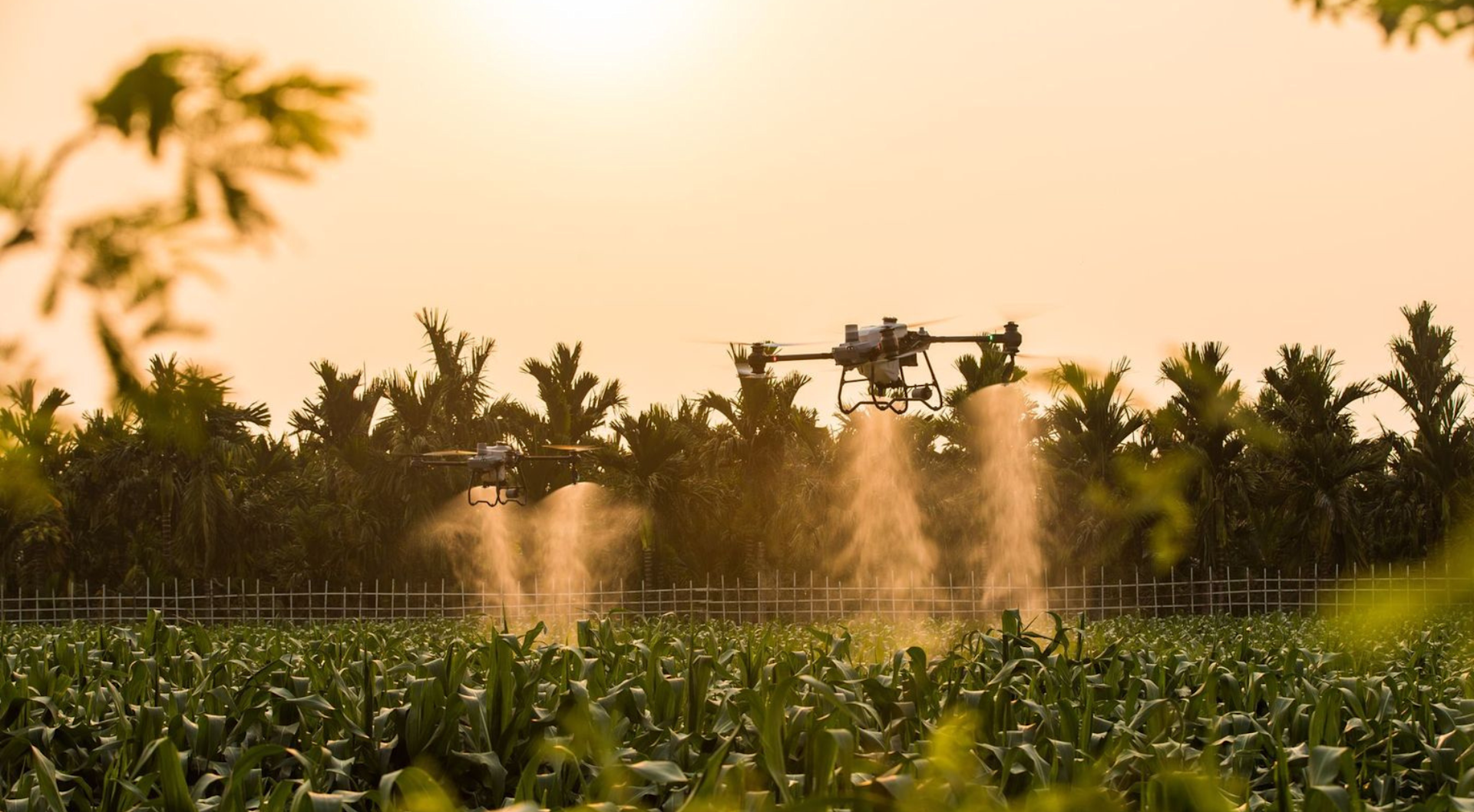
The Benefits of Implementing Spraying Drones for Farmers
Explore the benefits of spraying and spreading drones highlighted by Drone Ag's case study on the Agras drone's seed dispersal in Scotland.
Numerous spraying and spreading drone options are available to streamline farming operations, from crop management to whitewashing glasshouses.
These solutions significantly expedite time-consuming tasks whilst curbing resource wastage.
Using DJI Agras drones to spread seeds drastically reduces soil disruption and contributes to lower CO2 emissions than using a tractor.
Drone Ag is conducting a case study in Scotland using the DJI Agras T10 drone, evaluating the benefits of drone-based seed dispersal.
The integration of spraying and spreading drones is revolutionising farming operations. They offer a range of solutions, from crop management to applying whitewash to glasshouses. This significantly expedites time-consuming tasks and minimises resource wastage through precise, even distribution.
For example, if you are looking to efficiently whitewash a large, industry-scale glasshouse this would typically involve using a roof-mounted rig pushed along by an operator, which comes with some risk and requires significant time and effort. But by using a spraying drone, the job can be autonomously actioned and completed within an hour (depending on the size of the glasshouse). DJI Agras drones allow you to specifically set the nozzle to disperse liquid at the desired rate, providing significant benefits in terms of speed and safety over the traditional method.
The DJI Agras series consists of cutting-edge drones designed to enhance efficiency in the agricultural sector, with the newest additions to the series being the T50 and T25.
The T50 boasts a substantial carrying capacity of up to 40 litres for spraying and 50kg for spreading, making it ideal for large-scale farming operations. Meanwhile, the T25 offers similar advanced features in a more compact form, with a 20 litres spraying and 25kg spreading payload, perfect for smaller-scale tasks.

Agras Case Study
Drone Ag, a company looking to increase farming productivity through drone automation, is currently conducting a case study on a farm in Scotland. This study aims to evaluate the effectiveness of seed dispersal and subsequent growth using the DJI Agras T10 to disperse seeds. They are doing this by monitoring how well the seeds develop compared to previous seasons when dispersal was done via tractor.
We're eager to find out how the clover seeds we spread, establish and help with pollination of the bean crop. It's great because we're not dragging heavy machinery through the field, meaning we're not crushing crop or compacting soil. Additionally the root structure of the clover helps to improve soil structure, and the clover itself fixes nitrogen for next season.
_Alex Macdonald-Smith, Chief Operations Officer
Since drones cause less soil disturbance than tractors, there will likely be healthier vegetation. Additionally, drones are battery-powered and thus have no direct emissions besides the power used to charge the batteries, making them more environmentally friendly. In the long term, using drones can also reduce overall fuel consumption, contributing to a more sustainable farming practice.
Drone Ag are also working with the world's largest slug-pellet manufacturer, De Sangosse, who appreciate the rising popularity of drone-based systems and see the benefit in their products being approved for application via drone. Right now, there are no regulated chemicals authorised for broad-scale application via drone, so Drone Ag, De Sangosse, and the Chemicals Regulations Division (CRD) of the HSE are collaborating on a trial to properly certify slug pellets for drone use.
If successful, this trial will be instrumental in protecting broadleaf crops from mollusc pressure, even in poor weather and ground conditions. This is because drones can access the field at times of year (late autumn) that ground-based machinery often cannot.
This trial will lay the groundwork for future drone-applied chemical trials.

DJI, the T25 spreading.
DJI Agras T50 and T25
The DJI Agras T50 is a game-changer in the world of larger-scale farming. Its impressive carrying capacity of up to 40 litres for spraying or 50kg for spreading sets it apart from the previous Agras models, allowing it to cover up to 50 acres (21 hectares) per hour. And for those looking for a smaller option, the DJI Agras T25 shares most of the same functional features in a smaller package with a 20 litres spraying or 25kg spreading payload.
A key feature of the Agras drones is the dual atomised spraying system with a four-sprinkler configuration and coaxial dual-rotor design. This ensures precise coverage with adjustable droplet sizes and high flow rates, making it a great tool for spraying an even layer of whitewash over greenhouses or spreading seeds.
Both Agras drones have advanced obstacle-bypassing capabilities thanks to the UHD FPV gimbal. They also have a fixed-altitude flight over 50° slopes, guaranteeing optimal performance even in challenging terrain. This makes them well-suited to vast landscapes and flying around structures such as barns, housing, and machinery.
Additionally, both drones can perform automated operations. Meaning, you can set your mission parameters, and the drone will carry out the operation autonomously. So, there is no need to pilot the aircraft manually; you simply monitor it from your remote within a visual line of sight.

How to become a certified Agras Pilot
In the UK, drone spraying is legal, but operators do require certain permissions depending on what they are planning to spray. At a glance, this can look like a complicated process. Follow our guidance for an informative and simple view of what you need to do.
**Attain a General Visual Line of Sight Certificate (GVC)**The GVC is a UK CAA-approved qualification enabling operators to apply for an Operational Authorisation to fly in the Specific Category, involving a theory exam, Practical Flight Test, and Operations Manual creation.
Operating Safety Case (OSC)OSCs are needed for large drones over 25kg, such as the DJI Agras T25 or T50, and for any drone spreading/spraying activities, as these are considered dropping articles. An OSC requires you to submit a completed three-volume operations manual demonstrating to the CAA that all the relevant hazards and safety risks have been identified. To make this process easy for you, heliguy™ offers OSC consultancy to help operators prepare their CAA applications.
Health and Safety Executive (HSE) ApprovalIf you want to apply pesticides via drone, you need prior approval from the HSE. You must ensure that spraying is done according to an approved Application Plan. The specific spray operations must be permitted by the HSE, and the Application Plan must be completed by aerial spraying operators. Ultimately, the HSE has to be satisied that all drons apraying can be done without risk to harming human health or the environment.
Summary
In summary, the Agras drones offer many of applications in farming, enhancing operational efficiency and streamlining processes. With fast-charging capabilities and robust data security protocols, these quad-copters are a reliable and indispensable tool for modern farming, offering farmers efficiency, precision, and durability.
heliguy™ offers various integration pathways, including purchase and rental options, along with dedicated after-care maintenance services. Additionally, our expert training team can assist you in becoming a certified drone pilot, expanding your understanding of drone laws and operations.
Contact us for personalised guidance on selecting the right drone for your needs.